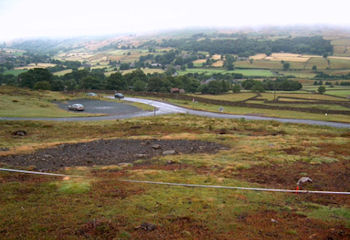The magnetic signatures of medieval and post-medieval pyrotechnical industries: PhD thesis, University of Bradford (2008)
Alan John Powell, 2009. https://doi.org/10.5284/1000065. How to cite using this DOI
Data copyright © Alan John Powell unless otherwise stated
This work is licensed under the ADS Terms of Use and Access.
Primary contact
Alan John
Powell
3 Harvest Close
Strensall
York
YO32 5SA
England
Resource identifiers
- ADS Collection: 948
- DOI:https://doi.org/10.5284/1000065
- How to cite using this DOI
The Magnetic Signatures of Medieval and Post-Medieval Pyrotechnical Industries
A study of the magnetic response of iron smelting, lead smelting, glass production and charcoal production sites in relation to geophysical survey
Alan John Powell
University of Bradford, 2008
Abstract

The medieval and post-medieval high temperature industries of iron smelting, lead smelting, glass production and charcoal production are investigated in order to obtain a better understanding of their magnetic characteristics and to improve the geophysical survey interpretation of the features associated with these industries. In recent years, geophysical survey techniques have been increasingly employed for enhanced, systematic detection and recording of iron smelting sites; in contrast, very few lead smelting, glass production and charcoal production sites have been geophysically surveyed. In this research, detailed geophysical surveys using magnetometry (fluxgate gradiometer) and magnetic susceptibility techniques were undertaken over selected iron smelting, lead smelting and charcoal production sites in different geographical locations, succeeded where possible by targeted site excavation. An experimental iron smelting furnace provided an insight into the changes to the magnetic properties of site working surfaces caused by the smelting process. An experimental charcoal kiln was constructed to measure temperatures during the charcoaling process and to determine the effect of its operation on the magnetic properties of the ground surface. A range of sample material, obtained from sites representative of the four industries, was subjected to a series of laboratory analyses. These included magnetic susceptibility, archaeomagnetic dating, microscopy, and heating experiments. Comparison of the laboratory analyses with the geophysical survey data has demonstrated that it is possible to determine the characteristic site features of each investigated industry with greater precision. By employing a similar approach, the analytical techniques described can be applied to other industries of the medieval/post-medieval periods.





